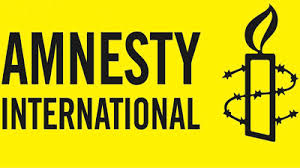
AI: Saudi-led Airstrikes Killed ’Scores of Civilians’ in Yemen
Local Editor
The Amnesty International [AI] organization said that new research and weapons analysis by the group in Yemen bring into sharp focus the high price civilians continue to pay amid the Saudi-led military coalition’s airstrikes all over the country and demonstrate a failure to abide by the requirements of international humanitarian law.
Amnesty International researchers investigated eight airstrikes in different parts of the country, including multiple strikes in Yemen’s capital, Sana’a, on 12 and 13 June and in Tai’z on 16 June. In total, the eight incidents killed 54 civilians [27 children, 16 women and 11 men] including a one-day-old infant, and injured 55, [19 children, 19 women and 17 men].
"International humanitarian law is clear that belligerents must take all possible steps to prevent or minimize civilian casualties. But the cases we have analysed point to a pattern of attacks destroying civilian homes and resulting in scores of civilian deaths and injuries", said Donatella Rovera, Senior Crisis Response Advisor at Amnesty International, who is currently in Yemen.
"There is no indication that the Saudi Arabia-led military coalition has done anything to prevent and redress such violations", she said.
Eyewitness testimonies from the aftermath of these and other strikes provide yet more damning evidence that coalition forces are failing to take necessary precautions to minimize civilian deaths and injuries, Amnesty International said.
In the case of Hajr Ukaish village, Saudi-led coalition forces apparently claimed that three adjacent homes reduced to rubble in an airstrike, which killed 11 and injured six members of the al-Ukaishi family, had been used to store weapons. The surviving relatives deny this claim, saying they are farmers. An Amnesty International researcher who visited the site found no evidence to support the claim that the target was a weapons store. The coalition forces have so far failed to provide any evidence to substantiate their allegation.
"Even if the intended target had in fact been a...cache this would not justify such a deadly attack on homes full of civilians without prior warning. Those planning the airstrike must have known it was likely to result in high civilian casualties and failed to take the necessary steps under international humanitarian law," the Response Advisor Rovera further said.
On 12 June, five members of the ’Abdelqader family were killed in another Saudi-led bombardment which destroyed four adjacent houses in the Old City in Sana’a. The Saudi-led coalition spokesman Brigadier-General Ahmed al-’Assiri meanwhile denied responsibility for the strike but a fragment of the bomb recovered from the rubble of the houses shows that it comes from a 2,000 lb [900 kg] bomb, the same type which has been widely used by the coalition in various parts of Yemen.
Furthermore, a triple strike launched by the Saudi-led coalition against Beit Me’yad, a residential suburb of the capital Sana’a, on 13 June killed 10 civilians - including three children and five women, and injured 28, including 11 children and 10 women - who lived near the intended targets of the strikes. In one of these strikes a 2,000 lb [900 kg] bomb killed an 11-year-old boy, two of his sisters, his brother, and his 10-year-old cousin, and injured five other members of the al-’Amiri family.
In an earlier attack investigated by Amnesty International the same type of bomb dropped by the Saudi-led coalition destroyed a cluster of three houses in al-Akma village [Ta’iz governorate] on 14 April. That strike killed 10 members of the al-Hujairi family, including seven children, a woman and an elderly man, and injured 14 other relatives, most of them children and women.
The bomb, identified from the markings on fragments found at the site by Amnesty International as a US-designed General Purpose Mark 84 [MK84, also known as BLU-117], manufactured in 1983 and contains over 400 kg of high explosive. Field investigations showed that the bomb failed to detonate on impact, limiting potentially greater destruction and more civilian casualties.
The same type of bomb killed 17 civilians and injured 17 others in an airstrike north-east of the capital on 1 May. According to expert analysis of fragments and craters found at the location of two other airstrikes which hit Hajr Ukaish and al-’Erra villages in the suburbs of Sana’a, similar types of 500-1,000 lb bombs were deployed.
According to Rovera, she said that, "The... eight cases investigated by Amnesty International must be independently and impartially investigated as possible disproportionate or indiscriminate attacks. The findings of any investigation must be made public, and those suspected of responsibility for serious violations of the laws of war must be brought to justice in fair trials. All victims of unlawful attacks and their families should receive full reparation", she further said.
Since the beginning of the Saudi-led military intervention on 25 March 2015, Amnesty International has investigated 17 separate airstrikes in five areas of Yemen [Sa’da, Sana’a, Ta’iz, Hodeidah, Hajjah and Ibb]. These incidents killed at least 223 people, including at least 197 civilians [32 women, 68 children’ and injured 419, including at least 259 civilians.
